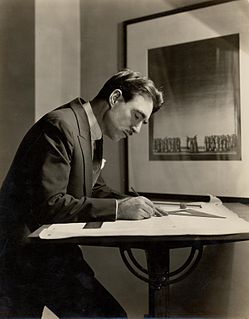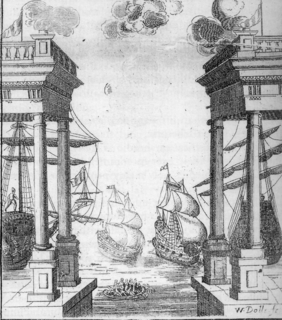


Nicola Sabbatini (1574 – 25 December 1654), also known as Niccolò Sabbatini or Nicola Sabbattini, was an Italian architect of the Baroque.

An architect is a person who plans, designs and reviews the construction of buildings. To practice architecture means to provide services in connection with the design of buildings and the space within the site surrounding the buildings that have human occupancy or use as their principal purpose. Etymologically, architect derives from the Latin architectus, which derives from the Greek, i.e., chief builder.

The Baroque is a highly ornate and often extravagant style of architecture, music, dance painting, sculpture and other arts that flourished in Europe from the early 17th until the mid-18th century. It followed the Renaissance style and preceded the Rococo and Neoclassical styles. It was encouraged by the Catholic Church as a means to counter the simplicity and austerity of Protestant architecture, art and music, though Lutheran Baroque art developed in parts of Europe as well. The Baroque style used contrast, movement, exuberant detail, deep colour, grandeur and surprise to achieve a sense of awe. The style began at the start of the 17th century in Rome, then spread rapidly to France, northern Italy, Spain and Portugal, then to Austria and southern Germany. By the 1730s, it had evolved into an even more flamboyant style, called rocaille or Rococo, which appeared in France and central Europe until the mid to late 18th century.
A native of Pesaro, he was extremely influential at the time for his pioneering and inventive designs of theaters, stage sets, lighting and stage machinery. Working in the court of the Dukes of Urbino, he was among the first designers of sophisticated machines which created realistic visual and sound effects such as the sea (the column wave machine), storms, thunder, lightnings, fire, hell, flying gods and clouds, etc. He wrote one of the most important books on how to construct and use a number of devices, scenes and machinery for the stage, Pratica di fabricar scene e macchine ne‘ teatri, which was published in 1638 . The internal architecture of theaters, such as plans for building seats for the audience, was also advanced by Sabbatini.

Pesaro is a city and comune in the Italian region of Marche, capital of the Province of Pesaro e Urbino, on the Adriatic Sea. According to the 2011 census, its population was 95,011, making it the second most populous city in the Marche, after Ancona. Pesaro was dubbed "Cycling City" by Italian environmentalist association Legambiente in recognition of its extensive network of bicycle paths and promotion of cycling. It is also known as "City of Music" as it is the birthplace of the composer Gioacchino Rossini. In 2015 the Italian Government applied for Pesaro to be declared a "Creative City" in UNESCO's World Heritage sites. In 2017 Pesaro received the European City of Sport award together with Aosta, Cagliari and Vicenza.

Lighting or illumination is the deliberate use of light to achieve a practical or aesthetic effect. Lighting includes the use of both artificial light sources like lamps and light fixtures, as well as natural illumination by capturing daylight. Daylighting is sometimes used as the main source of light during daytime in buildings. This can save energy in place of using artificial lighting, which represents a major component of energy consumption in buildings. Proper lighting can enhance task performance, improve the appearance of an area, or have positive psychological effects on occupants.
Stage machinery are the mechanical devices used to create special effects in theatrical productions.
Sabbatini developed and described a number of novel stage lighting techniques, such as dimming mechanism to darken the whole stage, directed spotlights for illuminating certain parts of the stage (it is believed that he invented the first reflector spotlight, by attaching a polished basin behind a light source) and several others, thus effectively being, together with Sebastiano Serlio and Leone de Somi, one of the creators of stage lighting for dramatic purposes, including scripting lighting changes in synchronization with the play or opera. He developed a number of acoustic effects machinery, such as a "thunder box", a contraption which had heavy (15 kg) iron or stone balls which rolled down a case of wooden stairs when the effect was called for.
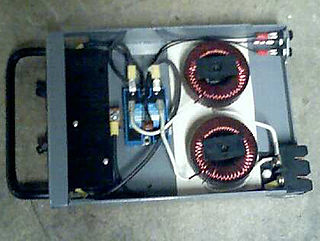
Dimmers are devices connected to a light fixture and used to lower the brightness of light. By changing the voltage waveform applied to the lamp, it is possible to lower the intensity of the light output. Although variable-voltage devices are used for various purposes, the term dimmer is generally reserved for those intended to control light output from resistive incandescent, halogen, and compact fluorescent lights (CFLs) and light-emitting diodes (LEDs). More specialized equipment is needed to dim fluorescent, mercury vapor, solid-state, and other arc lighting.

Sebastiano Serlio was an Italian Mannerist architect, who was part of the Italian team building the Palace of Fontainebleau. Serlio helped canonize the classical orders of architecture in his influential treatise variously known as I sette libri dell'architettura or Tutte l'opere d'architettura et prospetiva.
Sabbatini learned about theories on perspective by the mathematician and philosopher Guidobaldo del Monte, which had been published in his Perspectivae Libri VI at Pesaro in 1600. Asked to design the sets and stage machines in 1637 for a play in the Teatro del Sole in Pesaro, he used this knowledge to achieve perspective effects.
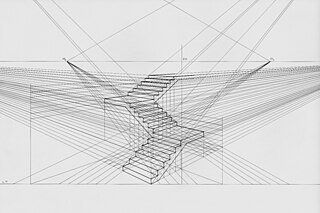
Perspective in the graphic arts is an approximate representation, generally on a flat surface, of an image as it is seen by the eye. The two most characteristic features of perspective are that objects appear smaller as their distance from the observer increases; and that they are subject to foreshortening, meaning that an object's dimensions along the line of sight appear shorter than its dimensions across the line of sight.

A mathematician is someone who uses an extensive knowledge of mathematics in his or her work, typically to solve mathematical problems.

A philosopher is someone who practices philosophy. The term "philosopher" comes from the Ancient Greek, φιλόσοφος (philosophos), meaning "lover of wisdom". The coining of the term has been attributed to the Greek thinker Pythagoras.
Among his many inventions devised for the design of more realistic decorations in the stage, he developed ways of quickly changing painted scenes, using several methods:
- Angle wings: flat panels at the sides of the stage, which were turned like pages in a book;
- Periaktoi: painted panels on the faces of standing triangles, which were turned around;
- Sliding shutters, which were moved on grooves in the floor;
- Roller curtains: the scene unrolled from above, over a previous one;
- Portcullis: sliding flat scene that rose rapidly from underneath the stage using counterweights.
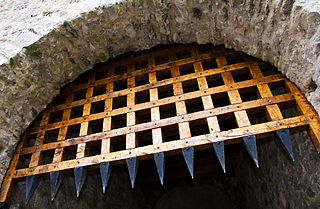
A portcullis is a heavy vertically-closing gate typically found in medieval fortifications, consisting of a latticed grille made of wood, metal, or a combination of the two, which slides down grooves inset within each jamb of the gateway.
These innovations created surprising and marvelous illusionistic effects, which came to be known as scènes à l'italienne.

An illusion is a distortion of the senses, which can reveal how the human brain normally organizes and interprets sensory stimulation. Though illusions distort our perception of reality, they are generally shared by most people.
In his researches on perspective for the sets, he defined the so-called œil du prince ("the eye of the prince"), as the ideal seat in the theatre's audience that affords the best possible perspective on the sets . In a chapter in his book, he describes ‘How to Place the Prince's Seat’, where ‘all the objects in the scene appear better... than from any other place’. It is located approximately in the middle of the seventh row and it is a coveted place.
Besides his important work in theatrical stage engineering, Sabbatini participated also as an architect and decorator in several of Pesaro's buildings, such as in the Palazzo Ducale, built by Duke Francesco Maria II della Rovere. Inside this building, he projected and built the Vecchio Teatro di Corte (old court theatre), which was later demolished. Later, he was commissioned by a group of Pesaro citizens to build the new Teatro del Sole (Sun Theater), which was inaugurated in 1637. Sabbatini was involved in the project of the new sea port of Pesaro and contributed to some works of art, such as in the design of three articulated panels painted by Giovanni Giacomo Pandolfi in the Nome di Dio oratory, also in Pesaro.

